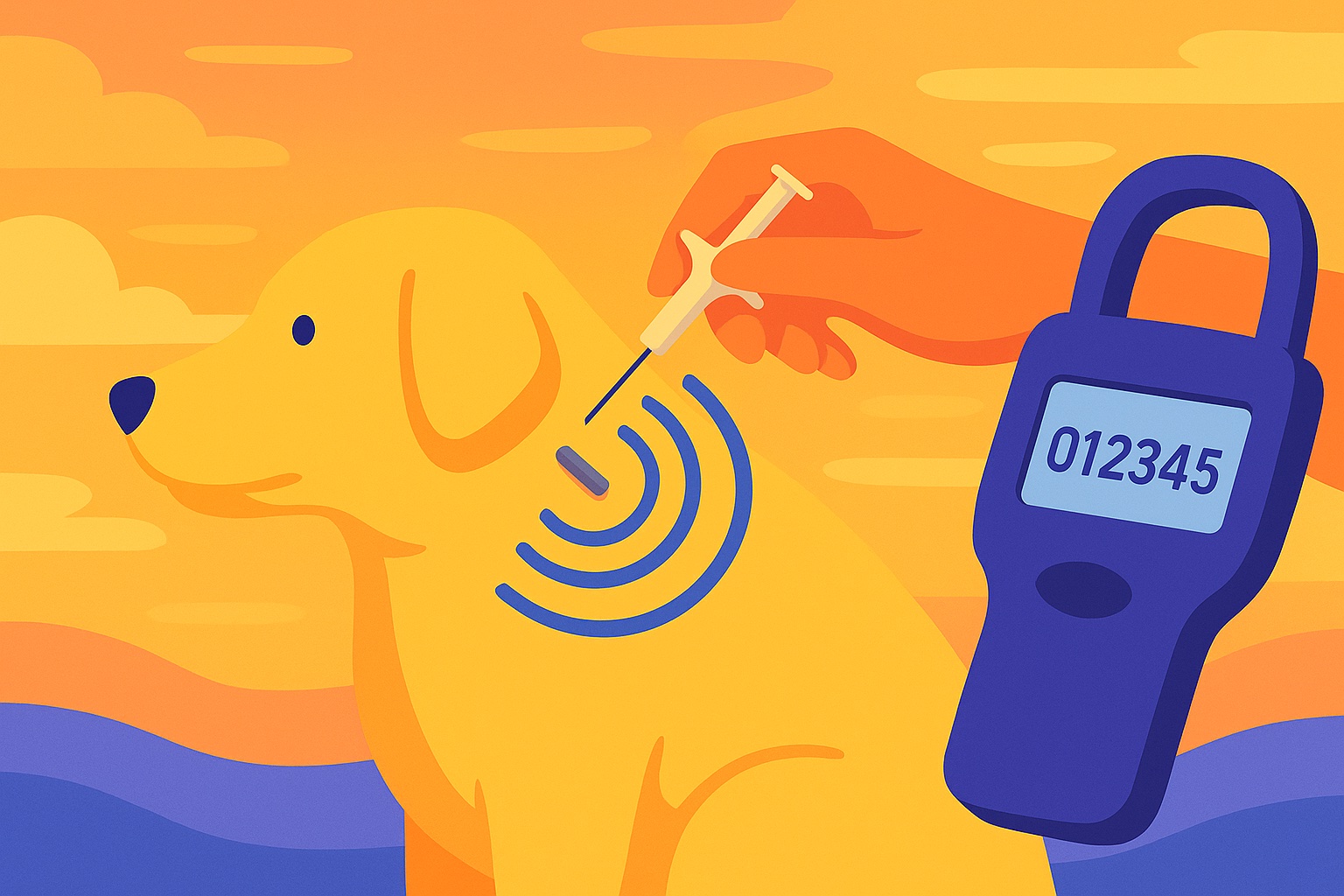1. Myth: Microchips track your pet’s location
Fact: Microchips are not GPS devices.
A microchip doesn’t transmit signals or provide real-time tracking. It’s a small passive RFID chip that only stores an ID number. That number can be read by a microchip scanner and looked up in a registry to contact you.
2. Myth: All microchips are registered automatically
Fact: Implantation and registration are two separate steps.
When your vet implants a chip, it doesn’t automatically connect to your contact information. You must register the chip with a registry to make it searchable if your pet is found.
3. Myth: Microchips contain your personal information
Fact: They don’t.
The chip itself only stores a unique identification number. Your name, address, and phone number are kept securely in the registry database, not inside your pet.
4. Myth: A microchip can replace an ID tag
Fact: A microchip is backup, not a replacement.
An ID tag is visible and provides instant contact info for anyone who finds your pet. A microchip works when the tag is missing, but both together give your pet the best chance of returning home quickly.
5. Myth: Microchipping hurts your pet
Fact: The procedure is quick and minimally painful.
Implantation feels similar to a routine vaccination. The chip is about the size of a grain of rice, and most pets barely react.
6. Myth: Microchips can fall out or move around the body
Fact: Modern chips are designed to stay put.
Chips are usually coated with a biocompatible material that bonds with tissue, keeping them in place under the skin between the shoulder blades.
7. Myth: All microchips use the same frequency
Fact: There are multiple frequencies in use worldwide.
While most chips in North America operate at 134.2 kHz (ISO standard), older or regional models may differ. Most modern scanners can read all major frequencies—but double-check if you travel internationally.
8. Myth: Microchips expire over time
Fact: They last for life.
Microchips don’t need batteries and don’t wear out. Once implanted, they should function for the entire lifetime of your pet.
9. Myth: You only need to register once
Fact: You need to keep your information current.
If you move or change your phone number, update your pet’s registration immediately. An outdated registry record is as bad as no record at all.
10. Myth: Microchips guarantee a lost pet’s return
Fact: They dramatically increase the odds—but don’t guarantee it.
A microchip helps shelters and vets identify pets and contact owners, but success depends on proper registration, updated info, and a finder who knows to scan for a chip.
Final Thoughts
Microchips are small, safe, and inexpensive—but their real power lies in registration and upkeep.
If your pet already has a microchip, check that your registry information is correct today.
If not, schedule a quick appointment with your vet—it’s one of the best gifts you can give your pet for life.
